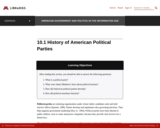
This lesson understand political parties and their origins.
- Subject:
- History
- U.S. History
- Material Type:
- Reading
- Textbook
- Author:
- University of Minnesota
- Date Added:
- 12/10/2021

This lesson understand political parties and their origins.

Slides and lesson plan to analyze the impact of political speech as a tool to bridge divides in a 2-party system.
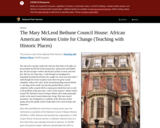
As a historic unit of the National Park Service, the Mary McLeod Bethune Council House is listed in the National Register of Historic Places. The site also is within the boundaries of the Logan Circle Historic District. This lesson is based on the Historic Resources Study for Mary McLeod Bethune Council House National Historic Site, as well as other materials on Bethune and the National Council of Negro Women. The lesson was written by Brenda K. Olio, former Teaching with Historic Places historian, and edited by staff of the Teaching with Historic Places program and Mary McLeod Bethune Council House National Historic Site.

This is a full lesson plan that includes instructor script, PowerPoint slides, and student activities about the Articles of Confederation and the Continental Congress.
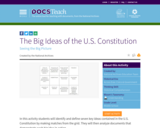
In this activity students will identify and define seven key ideas contained in the U.S. Constitution by making matches from the grid. They will then analyze documents that demonstrate each big idea in action.
This activity is designed to prepare students for the Constitution-in-Action Learning Lab at the National Archives in Washington, DC. It is a part of a package of pre-visit activities associated with the lab experience.
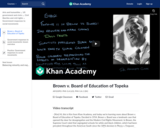
A deep dive into Brown v. Board of Education of Topeka, a Supreme Court case decided in 1954. It ended the doctrine of "separate but equal" and brought an end to racial segregation in schools. In this video, Kim discusses the case with scholars Michael McConnell and Theodore Shaw.

Unit Theme: Elections, government, and advertisementsLesson Title: What’s a Campaign? Level: Grades 4-5Big Idea/Essential Question: What is an election? What is an election campaign? and How have election campaigns changed over time?
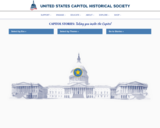
Capitol stories: taking you inside the capitol! Choose by historical era, themes, or specific stories.

This 3-room video tour of the U.S. Capitol, featuring the Crypt, Rotunda, and National Statuary Hall.
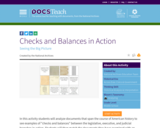
In this activity students will analyze documents that span the course of American history to see examples of "checks and balances" between the legislative, executive, and judicial branches in action. Students will then match the documents they have examined with an appropriate description of the branches of government involved in the action.
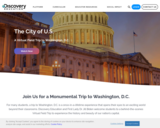
For many students, a trip to Washington, D.C. is a once-in-a-lifetime experience that opens their eyes to an exciting world beyond their classrooms. Discovery Education and First Lady Dr. Jill Biden welcome students to a behind-the-scenes Virtual Field Trip to experience the history and beauty of our nation’s capital.
Designed for students in grades 4-8, this action-packed tour features remarkable special guests and give viewers an inside look at six landmark locations:
The White House
The U.S. Capitol Building
The Supreme Court
The Martin Luther King, Jr. Memorial
Arlington National Cemetery and the Tomb of the Unknown Soldier
The Smithsonian National Air and Space Museum
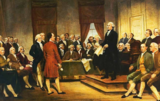
This activity is designed to help students understand the debates at the Constitutional Convention in 1787 that shaped America’s legislative branch of government. The primary goal of this activity is for students to discover how a compromise balanced the needs of large states and small states and how this led to the creation of the current House of Representatives and Senate.
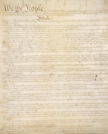
The nation’s founders believed Congress to be the fundamental institution of the federal government, since it is the body that most closely represents the people. The framers of the United States Constitution began by creating Congress. Then they established the other two branches of government—the executive branch and the judicial branches.The Constitution gives each branch distinct powers, but it makes sure that the three are in competition. Each branch has its own ways to check and balance the powers of the other two. The separation and balance of powers has contributed to the government’s enduring vitality, providing order and stability while allowing flexibility for adaptation and change.
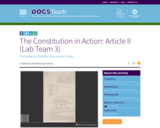
In this activity students will analyze the Senate Journal of the First Congress and identify how the document demonstrates content contained within Article II of the Constitution in action.
This activity is designed to prepare students for the Constitution-in-Action Lab at the National Archives in Washington, DC. It is a part of a package of activities associated with the lab experience.
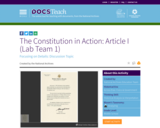
In this activity students will analyze the Oaths of Senators for the Impeachment Trial of William Jefferson Clinton and identify how the document demonstrates content contained within Article I, sections 1-7 of the Constitution in action.
This activity is designed to prepare students for the Constitution-in-Action Lab at the National Archives in Washington, DC. It is a part of a package of activities associated with the lab experience.
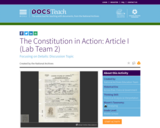
In this activity students will analyze the Declaration of Intention for Albert Einstein and identify how the document demonstrates content contained within Article I, sections 8-10 of the Constitution in action.
This activity is designed to prepare students for the Constitution-in-Action Lab at the National Archives in Washington, DC. It is a part of a package of activities associated with the lab experience.
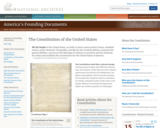
The Constitution acted like a colossal merger, uniting a group of states with different interests, laws, and cultures. Under America’s first national government, the Articles of Confederation, the states acted together only for specific purposes. The Constitution united its citizens as members of a whole, vesting the power of the union in the people. Without it, the American Experiment might have ended as quickly as it had begun.
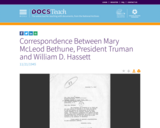
This document was identified by teachers in our Primarily Teaching 2016 Summer Workshop at the Truman Library.
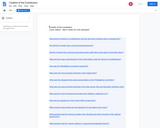
Videos created by the Center For Civic Education to support the We The People curriculum. These videos are designed to support teachers in their understanding with the possible use with high ability students in high school.

This lesson plan from the Levin Center at Wayne State University is about Defining Congressional Oversight. This resource includes a downloadable document (PDF), embedded video, and images.The lesson plan also includes a Spanish version.